‘We do not have a critical culture in architecture’

The Daily Star (TDS): What is the current state of living spaces in Dhaka?
Kazi Khaleed Ashraf (KKA): When we talk about living spaces, I envision a network of interconnected spaces that shape the experience of a city dweller in Dhaka. This extends from domestic spaces, where one shares intimate moments with family, to public spaces, where individuals coexist with strangers. The livability of a city, in my view, is largely determined by the quality of public spaces, yet the current scenario is deeply troubling.
Newspapers report on this crisis daily—hazardous air quality, worsening traffic congestion, poor walkability, a shortage of public spaces and parks, and the rapid destruction of wetlands. The list of urban inadequacies in Dhaka is extensive, and, frankly, unacceptable. French sociologist Henri Lefebvre introduced the concept of the "Right to the City" in the 1960s, arguing that urban dwellers have an inherent right to shape their environment. Similarly, we must demand a city that is livable, sustainable, and conducive to a better quality of life—something that remains absent in Dhaka today.
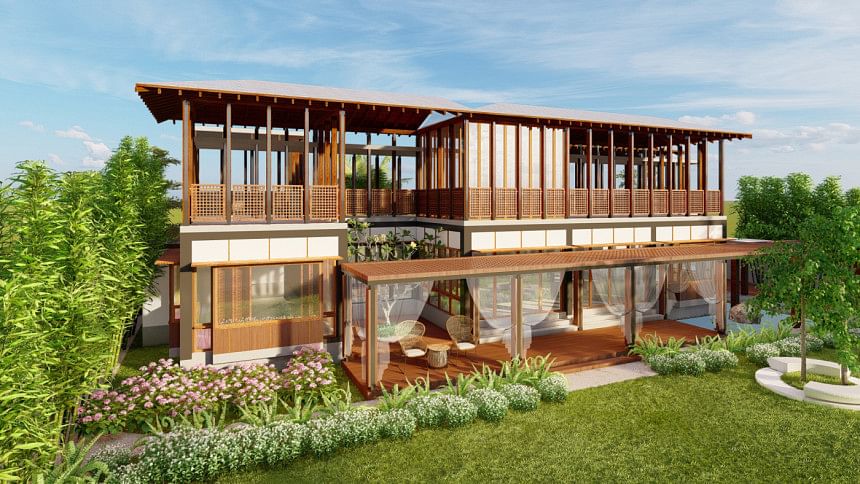
TDS: Could you share your journey as an architect and the inspirations that shaped your design philosophy?
KKA: My journey as an architect has been one of continuous questioning. Where do I work as an architect? What defines this 'where'? These were questions that preoccupied me from the very beginning.
Formal architectural education, while valuable, did not fully ignite my passion for the field. It was often experiences outside the classroom that left a lasting impression on me. One defining moment was my engagement with Muzharul Islam, Bangladesh's master architect, in the 1980s. Around the same time, my involvement with the activist organization Chetana introduced me to Bangladesh's architectural heritage, sharpening my inquiries about our built environment.
Seeking answers, I pursued further studies in the United States, where I had the privilege of learning from visionary teachers like Stanford Anderson, Joseph Rykwert, and Kenneth Frampton—figures who profoundly shaped architectural thought. I am also fortunate to have cultivated a remarkable circle of friends in both Bangladesh and the US, with whom I continue to exchange ideas.
If I were to pinpoint what has truly inspired me, I would highlight two key influences. First, my involvement with Chetana and the rediscovery of Bangladesh's heritage. There is an enormous wealth of knowledge embedded in our history, traditions, and architecture, yet during my student years, there was very little academic focus on our own architectural legacy. I often wondered: How can one be an architect in their homeland without understanding its architectural past?
Second, I have always been drawn to the architecture of the city, more than individual buildings. I am fascinated by the formation of urban clusters, the ways people navigate them, and the relationships between built environments. Even as a student, I was captivated by the evocative works of Italian architects like Piranesi and Aldo Rossi, who pioneered new understandings of the modern city. I must also mention Italo Calvino's brilliant book, Invisible Cities, which has deeply influenced my thinking.
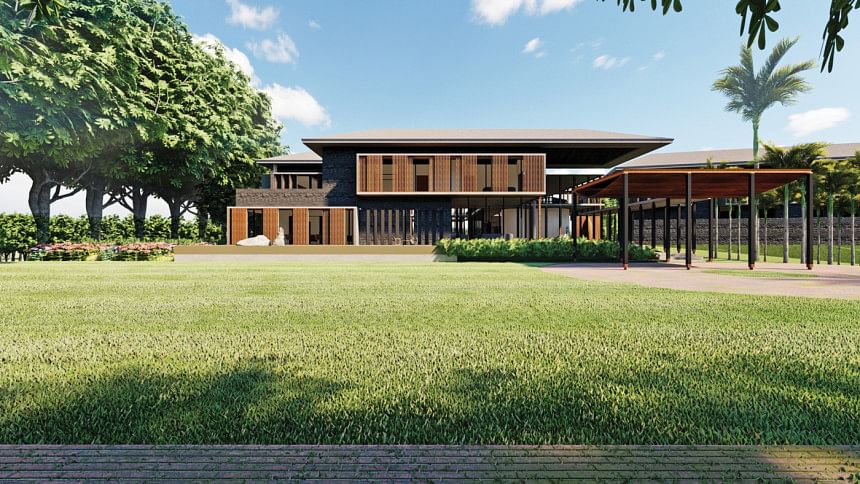
TDS: How do you integrate your design philosophy into your work?
KKA: My architectural work increasingly operates at the scale of the city, the landscape, and the region—what I call the large scale. This means I am less focused on individual buildings and more interested in the relationships between structures and spaces.
Rather than emphasizing the sculptural spectacle of singular buildings, I am more concerned with the interactions between buildings and spaces, between built environments and landscapes, and between different urban elements. The interstitial spaces—those in-between zones—are where urban life unfolds, shaping how people engage with their surroundings.
Much of my large-scale work is projective and speculative, requiring a long-term vision. Projective in the sense that it envisions a future urban landscape that does not yet exist but should be pursued. Many of these ideas take shape through my collaborations with my colleagues at the Bengal Institute for Architecture, Landscapes, and Settlements. I take pride in knowing that some of the key issues we have focused on—public spaces, social housing, riverbanks, and hydrological landscapes—are now integral to Bangladesh's architectural discourse.
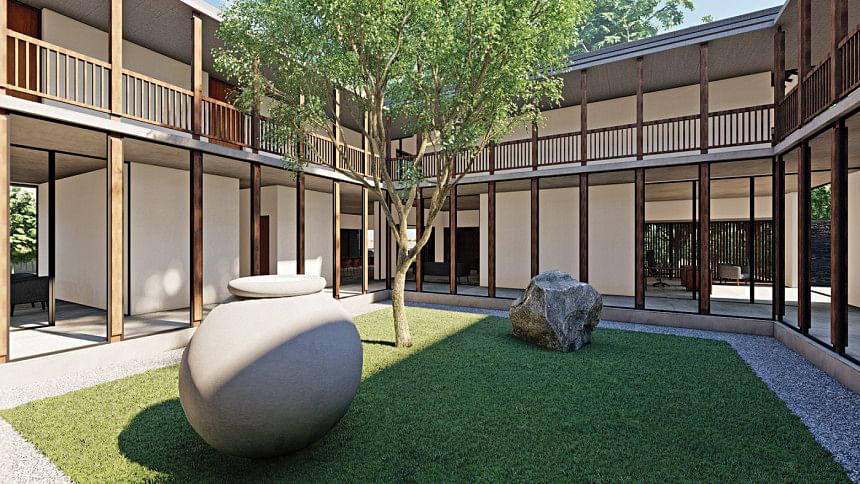
Another important aspect of my work is writing. I often say I have more books than buildings, and that is deliberate. Writing is fundamental to how I engage with architecture. Words, like architectural drawings, have the power to shape the future. I hope that my writings have contributed to a theoretical framework for thinking about and practicing architecture in Bangladesh.
If you are interested, you can explore my recently published anthology of essays, The Mother Tongue of Architecture. Most of my writings revolve around themes such as locational ethics, place-consciousness, urban imagination, and the hydro-geographic uniqueness of Bangladesh. These are not just academic ideas—they deeply inform how I approach architecture.
Even when considering a singular building, my focus is on its location, its relationship to its surroundings, and the ways it interacts with urban and ecological systems. When analyzing a city, I examine how its public spaces are articulated and how its built environment coexists with the land-water matrix that defines Bangladesh's geography.
TDS: How has the landscape of real estate development evolved in this region?
KKA: This question presents a challenge because it prioritizes real estate development over broader architectural concerns. While it is true that real estate operations in Bangladesh—particularly in Dhaka—have reached a new level of sophistication, which many have praised, it is crucial to broaden the discussion beyond this single aspect
Real estate development has progressed significantly since its emergence in the 1980s. Certain companies have introduced a new aesthetic for residential living, largely catering to the upper-middle class. However, I often find these developments more reminiscent of boutique hotels than genuine explorations of domestic life—lacking deeper considerations of how we should live together as a society
Many architects have capitalized on this trend, as it offers quick recognition and financial gain. What concerns me is when such real estate ventures are hailed as the pinnacle of architectural achievement and equated with successful housing solutions
First, an architectural marvel is not something that can be declared overnight. A society, over time, will determine whether a building truly embodies architectural excellence. While visual sophistication is certainly an important aspect of architecture, it is equally—if not more—important to assess how a structure contributes to the public realm. This is especially relevant for public institutions, where architecture should enrich social interactions, cultural engagement, and environmental sustainability. A meaningful architectural work must respond to critical questions:
• How does it address equity in an increasingly hyper-capitalist system?
• How does it embrace and reflect culture at a time when we are rapidly adopting Western ideals?
• How does it promote ecological sensitivity when our landscapes are being ravaged?
I realize these are ambitious demands, but a thoughtful and committed architect cannot evade them
Second, Dhaka is a sprawling metropolis of over 22 million people, with thousands arriving every month. A vast portion of the population lives in precarious conditions, while even the middle class struggles to secure adequate housing. Why is this the case? The urgent need is for social and affordable housing, yet where is the vision for inclusive urban living?
We have failed dismally in this regard. Instead of celebrating flashy apartment buildings as the pinnacle of housing success and commercial structures as hallmarks of architectural excellence, we should be advocating for social housing initiatives. And by "we," I mean government agencies, real estate developers, and architects
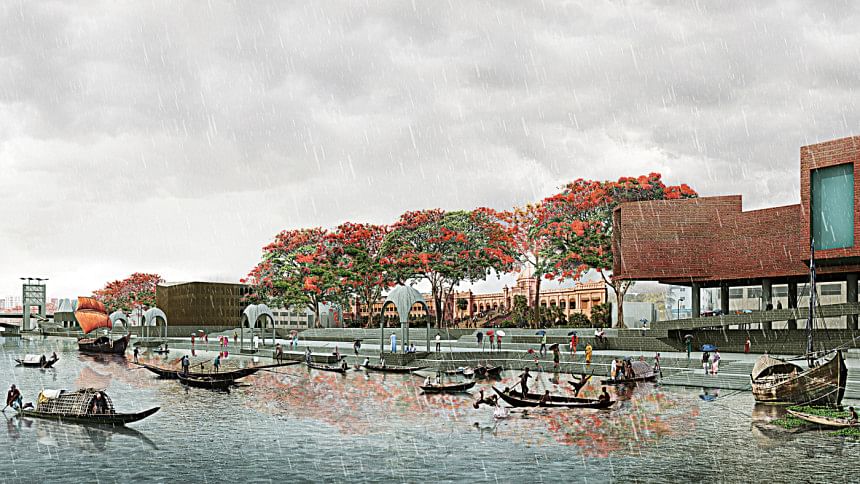
Few realize that modern architecture gained momentum in Europe in the 1920s by pioneering models of social housing. What we need today is a collective movement to address our housing crisis—not merely a celebration of commercial success
A major part of the problem is that we lack a critical culture in architecture. What is marketed by real estate developers and certain architects goes largely unchallenged and unanalyzed. Our architectural discourse cannot evolve in such a lopsided environment. Unlike literature or the arts, where criticism and discussion flourish, architecture remains devoid of analytical discourse and intellectual engagement. Without genuine conversations and open dialogues, there can be no meaningful progress
TDS: As an architect and thinker, what advice would you offer to newcomers in this field?
KKA: Who is going to listen to me!? In today's world, everyone considers themselves self-sufficient, armed with the limitless access provided by the internet. However, while the internet can show, it cannot teach. True learning happens through dialogue, reflection, and shared experiences
But if someone is patient enough to engage in a conversation with me, I would tell them this:
• Be patient. Take your time
• Go for long walks—yes, even in this chaotic city
• Observe the world around you. When possible, visit villages or small towns
• Read great books—perhaps something by Akhteruzzaman Elias or Italo Calvino
• Watch a beautiful film by Yasujiro Ozu. Seek out something new
• Surround yourself with people who nourish and inspire you
• Sketch endlessly, as if your hand cannot stop
• And occasionally, close your eyes—so that you can truly see
Do not chase architecture. If you allow yourself the time and space, architecture will slowly come to you.
TDS: What urgent reforms are needed to make our cities more sustainable?
KKA: You have used two terms that have become ubiquitous in today's discussions: "reform" and "sustainability." However, "sustainability" is often used so liberally that it has lost its meaning. Instead, I prefer the terms "habitability" and "livability"
Right now, living in the city feels like a form of torture—but it shouldn't be. Cities are both our future and our crisis. It appears we have rushed into urban expansion without considering what kind of city we want. Our planning efforts are woefully inadequate compared to the furious and uncontrolled pace of urbanization
Dhaka is a highly dynamic city, shaped by complex forces—but conventional urban planning strategies have failed to address its needs. Take, for example, the Detailed Area Plan (DAP)—a document meant to guide urban development. Instead of offering solutions, it has created more divisions.
Before jumping into reforms, master plans, and zoning strategies, we urgently need to reimagine our urban future. We must first ask: What kind of city do we want? Without a collective love and vision for our cities, any technical reforms will remain ineffective
I have already highlighted some of the key elements that can transform our cities into habitable spaces
• Prioritize public spaces—make more of them, and make them accessible to all
• Develop social housing to address economic disparities in urban living
• Integrate green spaces—plant more trees and ensure cities are walkable
• Work with water, not against it—build with the natural flow of our hydrological systems
• Clean and revitalize our rivers—let riverbanks become the city's backbone, not its dumping ground
We need new, catalytic models for shaping urban fabrics, neighborhoods, and ways of living—from houses to large-scale housing solutions. Without this, our cities will remain unplanned, fragmented, and ultimately unsustainable
The interview was conducted by Priyam Paul

 For all latest news, follow The Daily Star's Google News channel.
For all latest news, follow The Daily Star's Google News channel. 


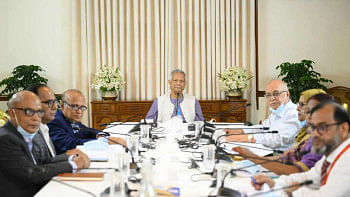
Comments